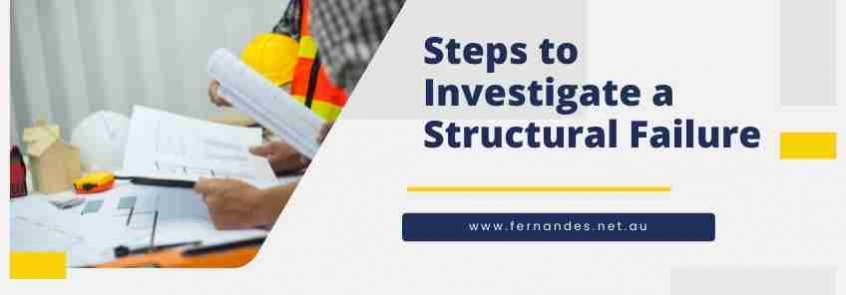-

Steps to Investigate a Structural Failure
By Fernandes & Associates 29 Jun 2022Think about an instance, in Brisbane a massive building has collapsed. News like this will send shockwaves around the country seeding fear within the heart of the public regarding the safety and security of the infrastructure. Along with trauma that ensues within the public, the damage it can cause both from the perspective of economical and life loss will be irreparable. Thus, to prevent such calamity from happening the failed structure must be forensically examined immediately.
Many things can cause a collapse to happen from a minute mathematical flaw in planning to a material or structural flaw. Thus, engineers in Brisbane (for example) must conduct a thorough structural examination of the structure. The structural engineer will employ several methods to determine what caused the failure so that such future incidents can be avoided.
The forensic engineering investigation process has three main components:
- Data acquisition
- Data analysis
- Testing and eliminating Hypotheses
- Conclusion - the reason behind failure
Data Acquisition:
This is the primitive but the most important part of the investigation. Here, the structural engineer closely inspects the site to search for evidence that can cause failure. The investigator must collect physical evidence objectively, typically by taking photographs, and measurements, and obtaining physical samples. In the case of construction failures, collecting this evidence as soon as possible is critical because it is perishable. When failure sites are cleaned up and the evidence is disturbed, evidence can be lost. Thus, the data must be acquired quickly before it is lost. A panel of structural engineers can be then set up either by an organization (public or private depending upon the type of failure) in Brisbane (following example) for the next step which is analysing.
Data Analysis:
The panel of structural engineers in Brisbane (as per the example), develops a wide range of hypotheses, essentially theories, about the cause of the failure at this stage. This stage is continual, with new hypotheses being introduced and others being fine-tuned as the investigation progresses as new evidence starts to appear. Keeping an open mind and considering a wide range of hypotheses is critical at this stage – one must not become fixated on one hypothesis to the exclusion of others. Thus, the data is analysed as the panel of structural engineers moves on to the next step.
Testing and eliminating Hypotheses:
From the previous step, it is a natural progression to the next step which is testing hypotheses. When a hypothesis is presented before the panel of structural engineers, where the incident has occurred, here according to our example it is Brisbane. At this point, the panel tests each of the failure hypotheses. They accomplish this by comparing them to the available evidence. For example, if the hypothesis is that high wind loads caused the structure to collapse, this theory can be tested using real meteorological data to estimate the actual wind speed at the time of failure, and the predicted collapse sequence based on this wind loading can be compared to the actual failure sequence that occurred on site. If the hypothesis under consideration predicts behaviour that contradicts the evidence, the hypothesis is unlikely to be the cause of failure.
Concluding the reason behind failure:
By this point in the investigation, several failure hypotheses should have been ruled out based on physical evidence, with the most consistent hypothesis being considered the most likely cause. This does not imply that there was a single cause of the failure; there could have been several contributing factors; however, this single hypothesis represents the one true sequence of events that resulted in the collapse. However, arriving at a single hypothesis is not always possible; there may be multiple hypotheses that are consistent with the evidence. This happens when there isn't enough evidence to separate the remaining hypotheses (which could be due to improper evidence collection in the first place).
Thus, following these steps of investigation, a forensic engineering examination will progress. However, there is no set process of investigation. These steps may somehow alter slightly from structural engineer to structural engineer, or from location to location. But in general, these are the quick steps that follow post-structural failure.
0 Comment
Leave a Comment
Your email address will not be published. Required fields are marked *






